
Get Business Email
No domain name required
You may want to send an important presentation or your brand video to your colleagues but are deterred by the Gmail attachment size limit. We all have experienced the frustration that comes with email attachment limits. However, it's surprising how, even in today’s modern age of digitalization, these attachment size limits are still an issue.
This is a concern, especially for Gmail users, who can only attach files up to 25 MB. Other email service providers like Outlook and Yahoo also impose a file attachment size limit of 20 MB and 25 MB, respectively.
Fortunately, there are ways to overcome this issue. Users can send large files easily by understanding some of the email limitations and attachment options. Are you looking for a way to attach large data to your email and send it seamlessly through Gmail? This guide will help you learn how to send large files through Gmail. So, let's get started!
Email Size Limits: What You Need to Know
Any email user must understand the basics behind email attachment size limitations. These constraints are essential due to various technical and operational purposes. A few of those reasons include:
1. Server Load Management
As there are millions of active users sharing data per second, email servers experience hundreds of requests simultaneously. Thus, without a defined size limit, these servers may clog due to large attachments. This further leads to slow performance or disruption of the email internal systems. Hence, restricting the size of email attachments helps the platforms work smoothly and deliver faster responses.
2. Bandwidth Efficiency
Sending large files via email is a costly affair. Large attachments consume a lot of bandwidth and prove to be inefficient for organizations. Hence, restricting the file size limit helps in maintaining the bandwidth and saves costs. Additionally, the step is beneficial for both the email service provider and the users.
3. Storage Constraints
Most email service providers store data from incoming and outgoing emails. Sending large files consumes a lot of storage space. This imposes a restriction on the storage space limit, increasing cost and disrupting potential services. It is thus essential to limit the file size to help manage the requirements for storage more efficiently.
4. Security Concerns
Security concerns are one of the major reasons for restricting file size limits for emails. Since large files are difficult to download and scan, they pose greater security risks. This increases the chances of malware compromising the recipient’s system. Smaller files, on the other hand, can be easily scanned and monitored, providing enhanced protection against any threats.
Understanding Gmail Attachment Size Limit
Gmail has a total attachment size limit of 25 MB for its users. This limit, however, enables senders to send multiple files together as long as it does not exceed 25 MB.
Google Workspace, the paid Google productivity suite, also has a file attachment limit of 50 MB. In case a user attempts to send a file of a bigger size, the Gmail interface automatically converts and starts uploading the file to Google Drive and generates a link to the uploaded file. This link is then incorporated directly into the email body. So, if you are wondering how to send videos in Gmail, don’t worry. Gmail has a way to allow you to send large files easily.
However, the total limit stated by the platform can sometimes be misleading to users. Gmail encodes attachments in a specific internal format, which increases the overall file size before sending. So, in reality, the total attachment size limit allowed by Gmail is about 12.5 MB only.
How to Send Large Files in Gmail?
Now that we know the Gmail attachment size limit, let's look at alternative ways to send large files via the email platform. These options provide an excellent way for users to share and manage big data, especially images and videos.
However, before proceeding further, let's look at the steps for beginners to attach files to Gmail. To send an attachment in Gmail, follow these steps:
- Open the Gmail page and click the ‘Compose’ option at the top left.

- Next, click the paperclip shape icon, which is present at the bottom of the compose window.
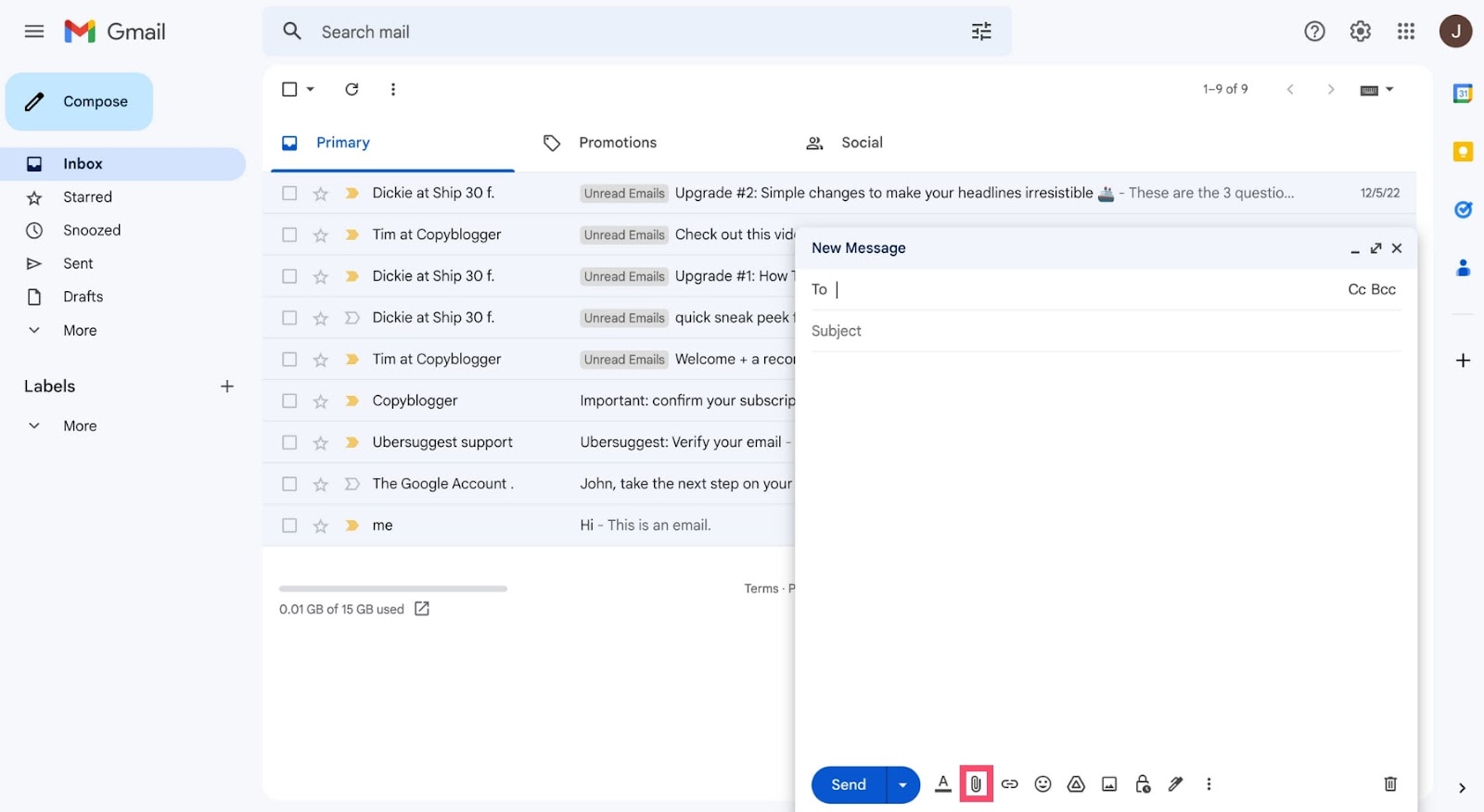
- Select the desired file from the gallery and attach it by clicking on ‘Open’ at the right bottom (Remember, the file size should not be larger than 25 MB).

- Users can also drag and drop the file in the email body if required.

- Lastly, add the recipient email ID in the ‘To’ section and click on ‘Send’.
Methods to Send Large Files on Gmail
Once you understand the basic procedure for adding an attachment to your Gmail, it’s time to understand the steps involved in sending large files. The top three common ways to share large files on Gmail include using Google Drive, compressing your file to make it smaller, and using a dedicated file-sharing tool. We will guide you through each of these options with step-by-step procedures.
1. Google Drive
Google Drive is one of Google's most renowned cloud storage services. It is an efficient method for users to bypass the Gmail attachment size limit. Google Drive is best for sharing large files as it supports attachments up to 15 GB. However, users must manually attach each file if there are multiple attachments.
The Google Drive limit of 15 GB is shared across all your Google platforms, including Photos and emails. If you do go over this limit, then you will be unable to upload new files or folders. Moreover, Google can even delete your data if the space is not cleared up within 2 years.
With that, if you are looking for steps to use Google Drive to attach large files, here they are:
A. Steps to upload files to Google Drive:
- Open the Google Drive window in a new tab.
- Click on the ‘My Drive’ option present in the left panel, and select ‘Upload Files’ or ‘Upload Folder’ as per the requirement. Click on New.
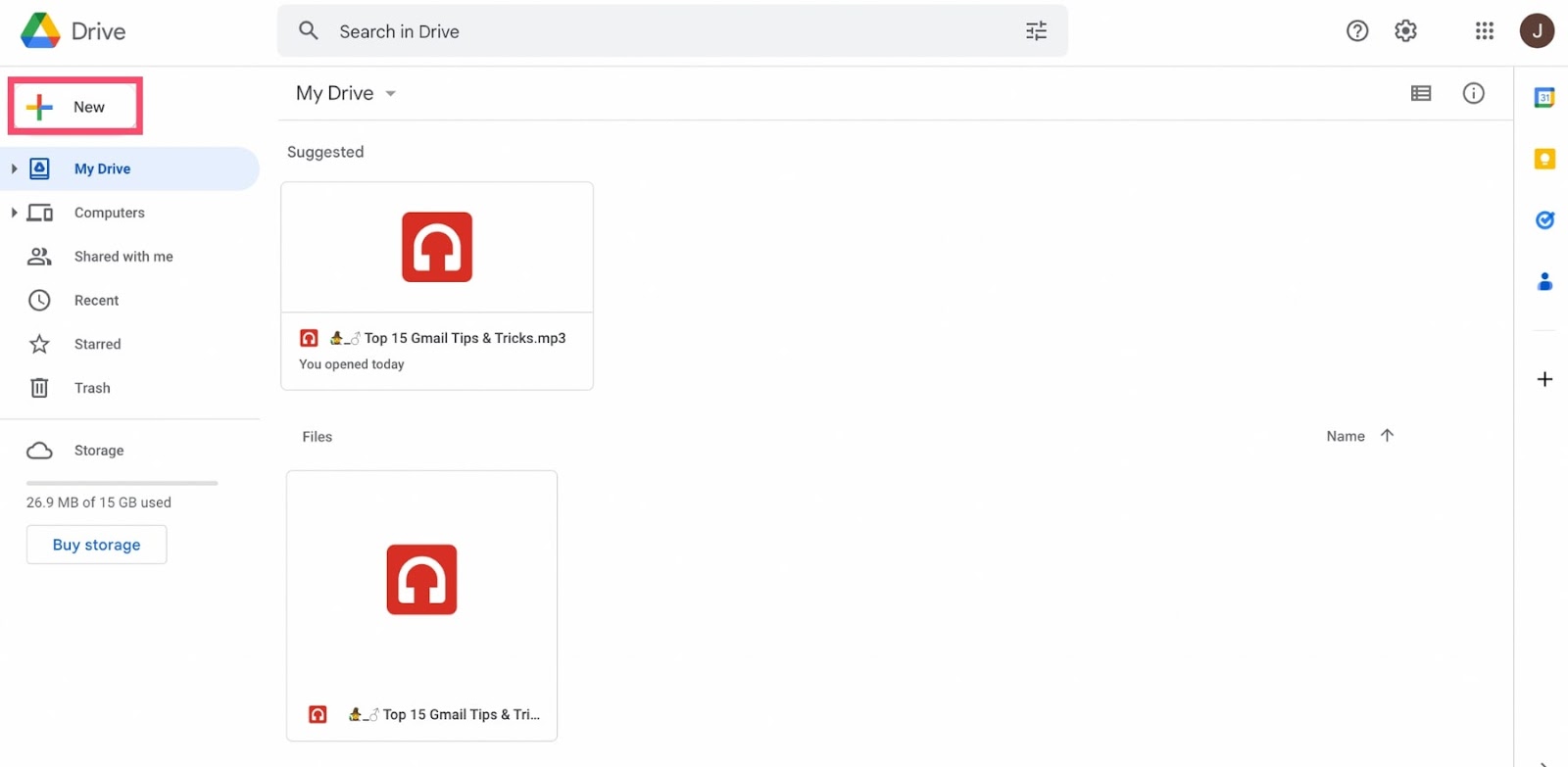
- Select and upload the file or data you want to send.
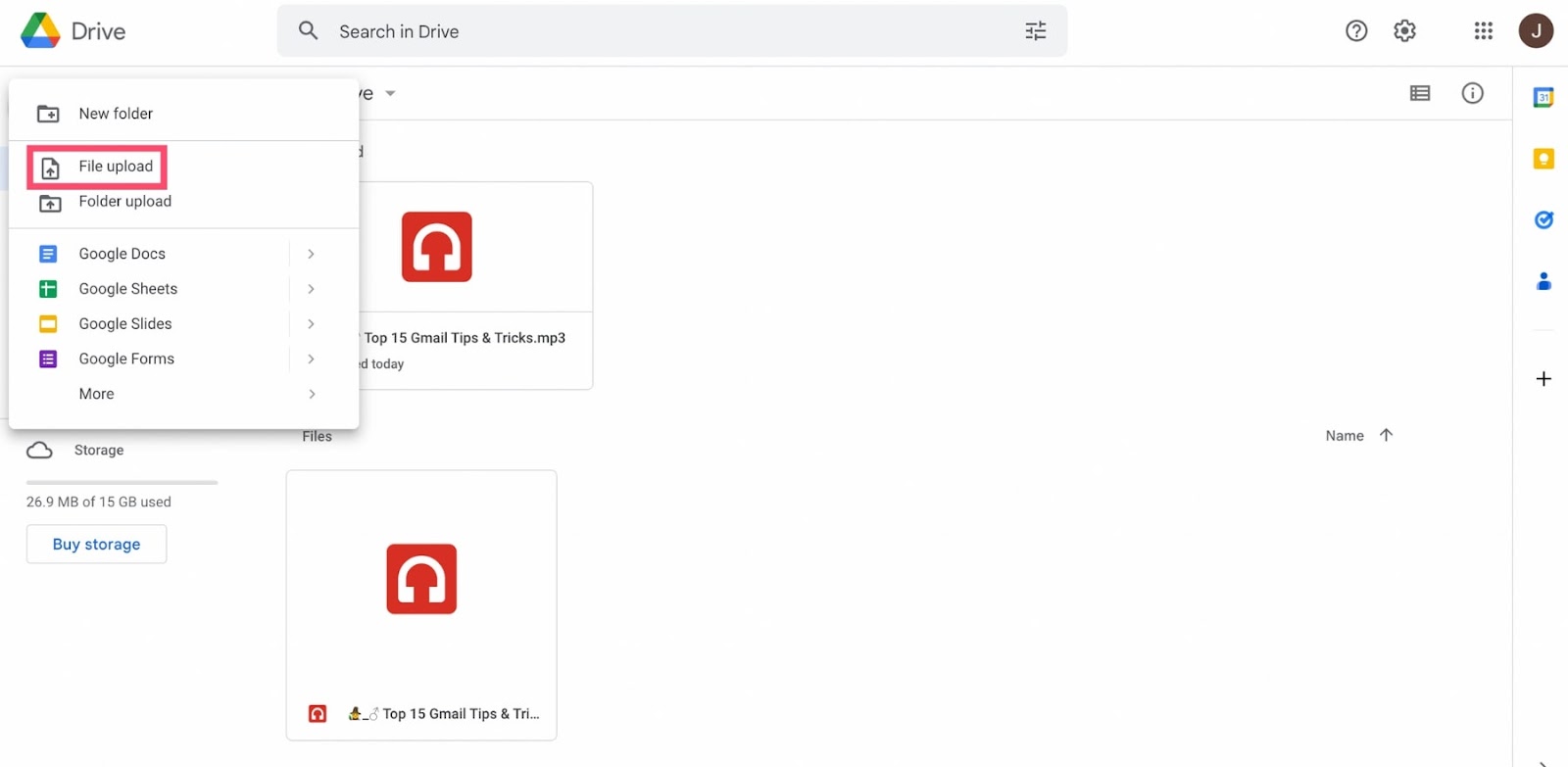
B. Steps to compose email in Gmail:
- Once your file is uploaded, open the Gmail tab and click on the ‘Compose’ option on the left.
- Next, click on the Google Drive icon (triangular) present at the bottom of the compose window.
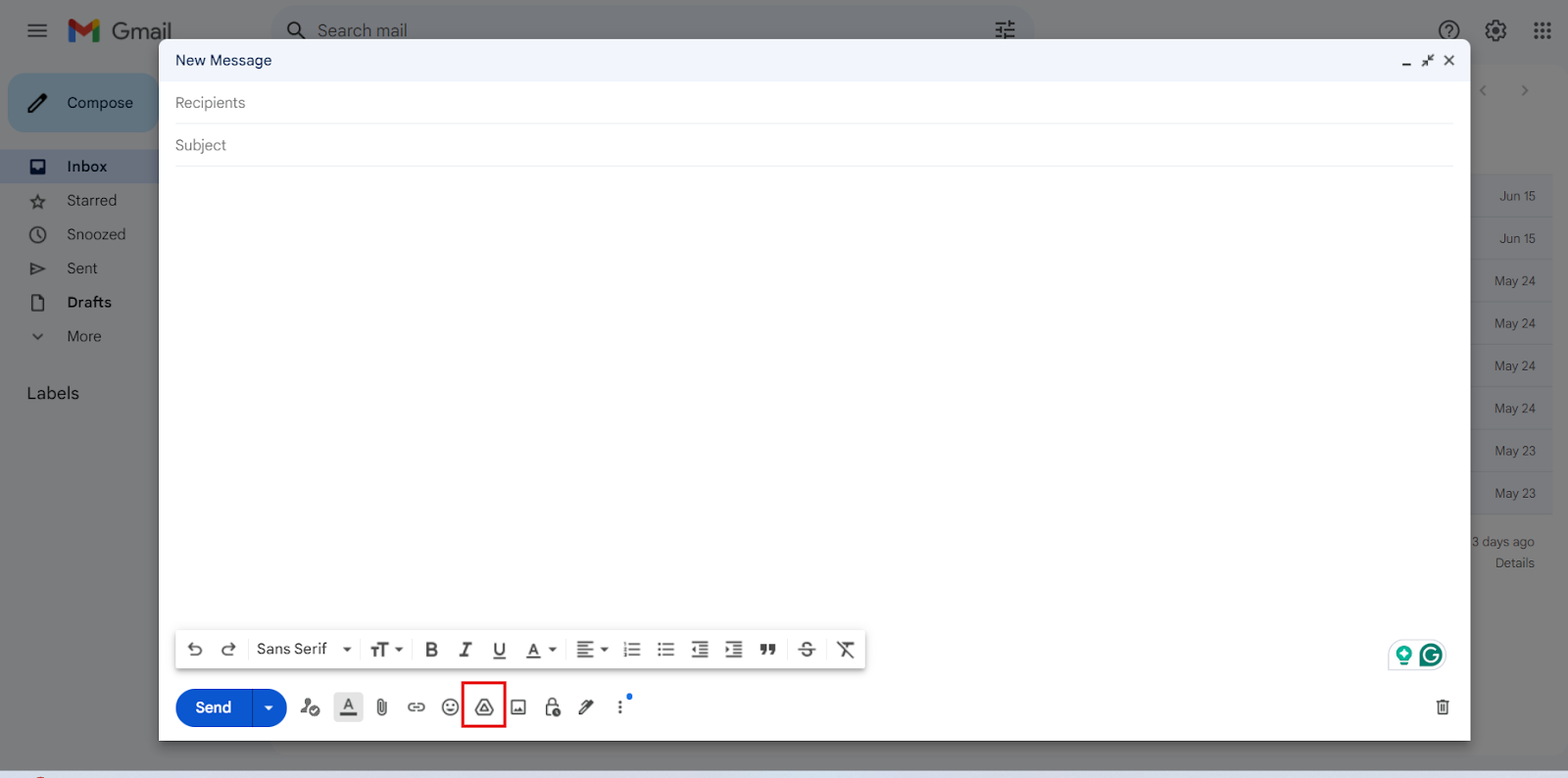
- The Google Drive tab will open. Select the file you want to send and click on the ‘Insert as Drive Link’ option.
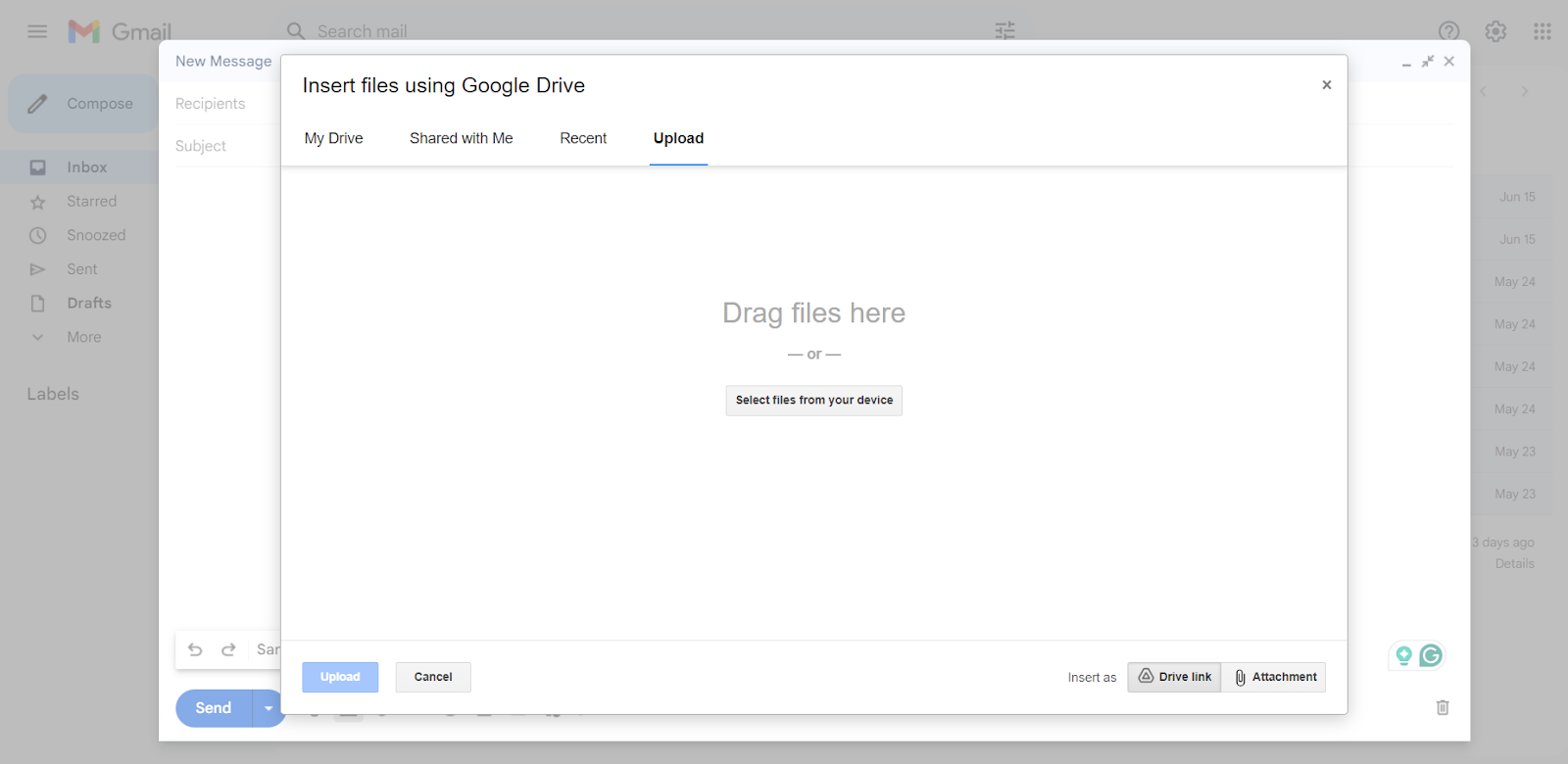
- Lastly, send your email by adding the recipient's name. The receiver can view the file via the link provided in the email body.
Sharing files via Google Drive link is an easy method, especially for users wondering how to send large files on Gmail. The platform is quite easy to navigate and offers simple features for sharing and handling large data. Also, this eliminates the risk of content being flagged as spam and is a safe method for sending raw files.
2. Compress Files into a Zip Folder
Compressing files into a zip folder is another efficient method for sending large files via email. This comparatively consumes less space and makes the overall process quite easier. It is a perfect choice for individuals seeking options on how to send videos in Gmail. Since file compressors allow sending multiple files together, their upload can be time-consuming. However, this method is ideal for those looking to reduce size and also streamline the process of sending data to the receiver.
The steps to compress files are as follows:
A. For Windows users:
- Select the files you want to send by right-clicking.
- Next, click on the ‘Send to’ -> ‘Compressed (Zipped) Folder’ option.

B. For Mac users:
- Select the files you want to send by right-clicking.
- Next, click on the ‘Compress’ Option.
Users can then simply attach the zipped files to their email in Gmail through ‘Compose’. Sharing files in compressed forms reduces the file size, allowing users to stay within the specified Gmail attachment size limit. The email recipient can unzip the files to their original size by downloading and extracting them.
3. Use of Large File Sharing Services
Another effective way to send large files is using third-party applications or cloud storage services, including Dropbox, OneDrive, or WeTransfer. Cloud storage services require no user registration. Senders can swiftly share their files just by uploading and sending the link to the recipient to retrieve them. Let’s take a look at each of these options to help you select the best one.
1. Dropbox
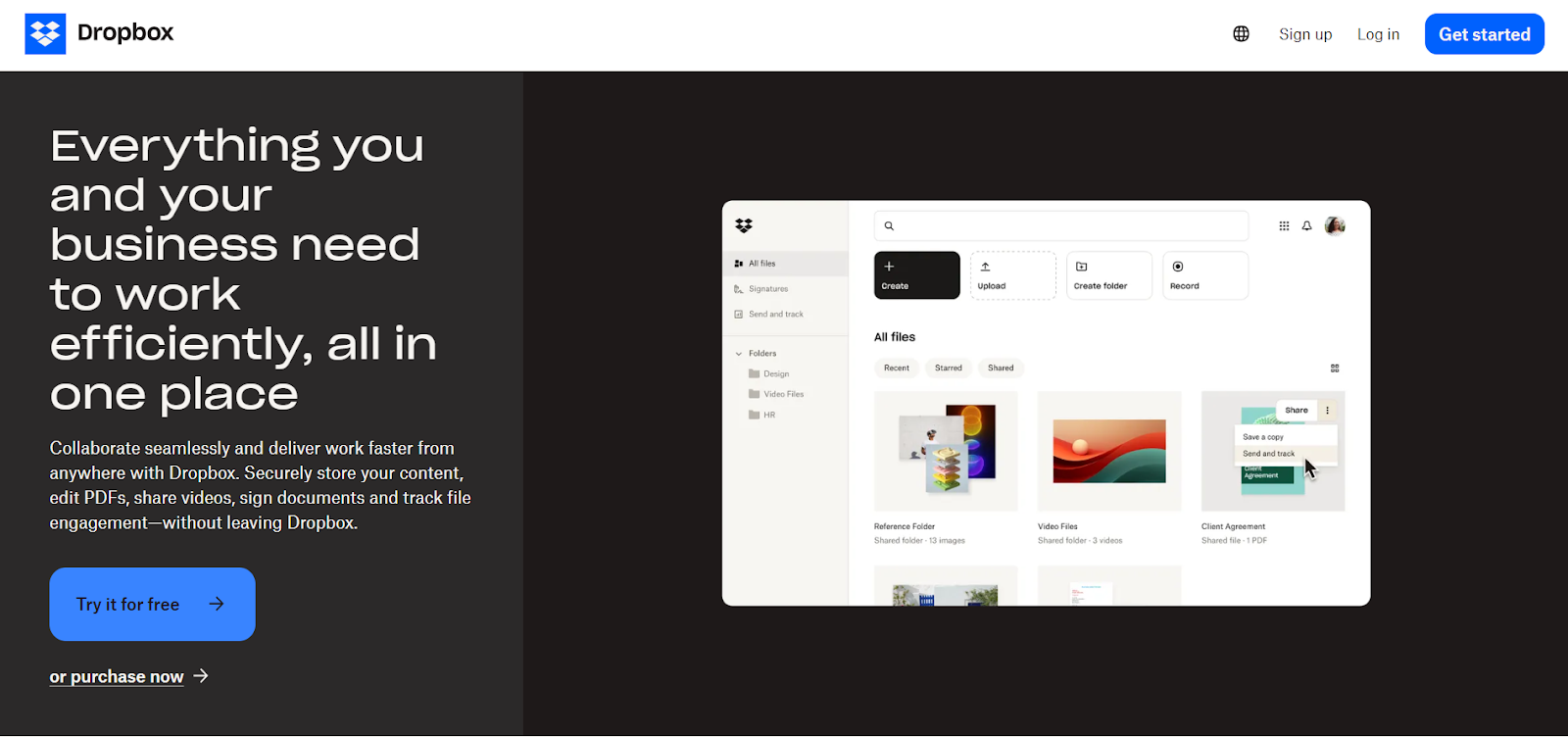
Dropbox is easy to navigate, especially for new users. All you have to do is just upload your file and share the link with the recipient. This platform offers a free basic plan with features such as file recovery and sync options, while the paid business plans offer more robust components. Some of them include a file transfer limit of upto 50 GB, PDF editing, and video editing.
2. OneDrive
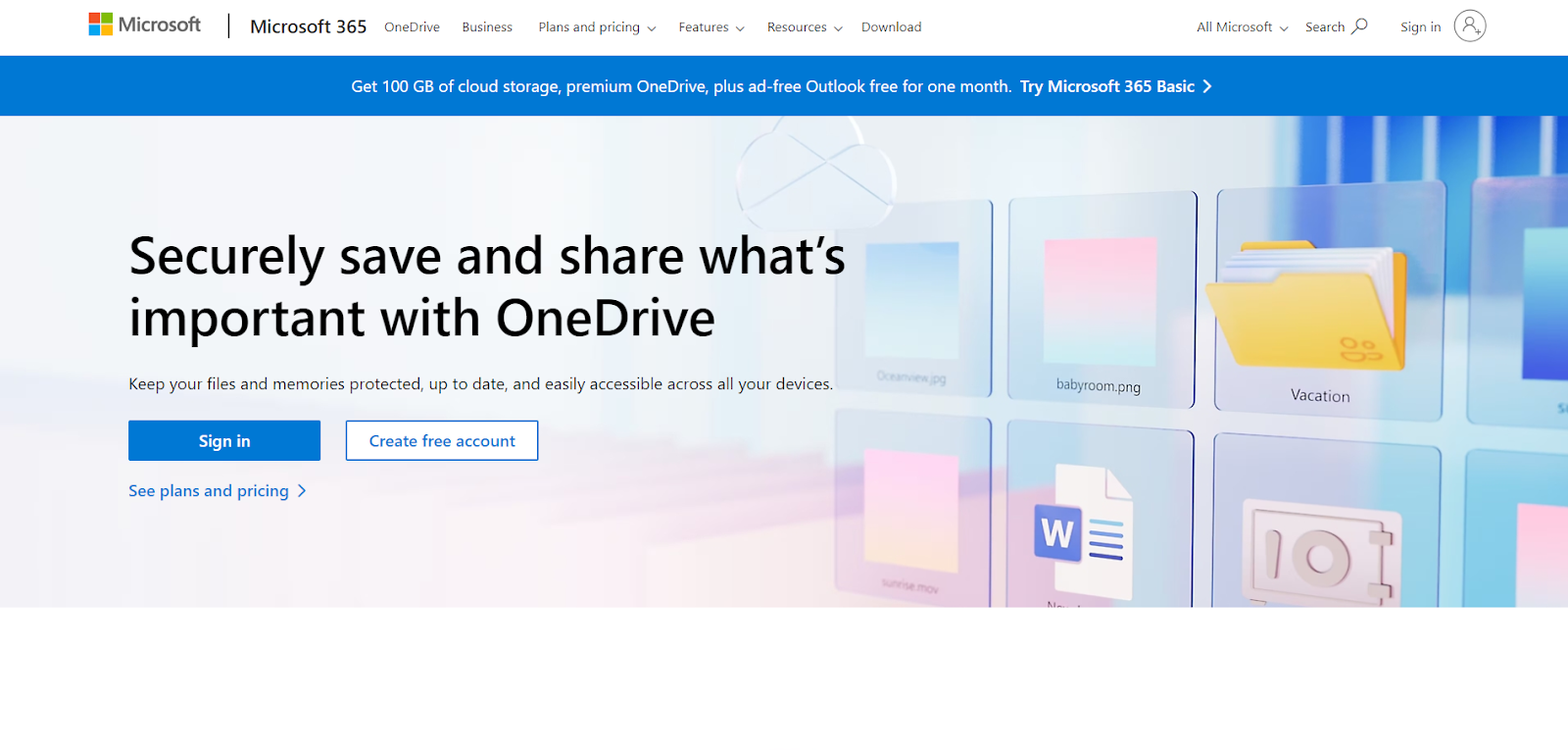
OneDrive, a file-sharing and storage solution from Microsoft, works similarly to Dropbox. Users can save their data to OneDrive and access it from anywhere. You can back up important data and access it across multiple devices. Furthermore, OneDrive is safe and secure, with a free version available for personal use and several paid plans for professionals.
3. WeTransfer

WeTransfer allows users to send files up to 2GB for free, unlike the Gmail attachment size limit. These files remain available on the server for two weeks. WeTransfer is the most popular choice among users for sending large files, such as audio-video files, presentations, music, etc. The platform is also completely free to use and can support up to 2 GB of file size.
While sharing files via third-party software or apps is worthwhile for users, some of them have repetitive ads or push notifications, which may interrupt the service for the senders. It is essentially important to ensure the security of your files, especially when sharing sensitive information through different servers.
Wrapping Up!
It is crucial to understand the Gmail attachment size limit for better communications. Though using Gmail services can be cumbersome sometimes, fortunately, there are alternative ways to overcome it. By using some of the most popular methods discussed above, like Google Drive or compressing files, users can tackle Gmail's size constraints smoothly.
However, for more efficient and unrestricted services, try considering Neo. The rising star of email hosting providers makes sharing and sending files hassle-free for users. Try Neo’s services and say goodbye to traditional old methods today!
Frequently Asked Questions (FAQs)
Q1. What happens if I exceed the attachment size limit?
The maximum Gmail attachment size limit allowed by the platform is 25 MB. However, for users trying to attach a file of a large size, there are alternative options. In such cases, Gmail prompts its users to use the Google Drive link to share large amounts of data. For users, searching for methods on how to send large files on Gmail, they can upload the file to Google Drive, manage access, and share the links via email to recipients.
Q2. Can I send large files such as images and videos through Gmail?
Yes, if you are thinking about how to send videos on Gmail, upload and share them through Google Drive. Since Gmail does not allow its users to send large amounts of data, instead of sending the email directly, users can share the Google Drive link. Additionally, some of the other ways, like compressing files to a zip folder or sharing via third-party services, are also efficient options for senders.
Q3. Is there a limit to the file size I can upload to Google Drive?
Google Drive is an effective alternative that offers much more space compared to Gmail's attachment size limit. However, the limit for individual file uploads depends on the Google Drive storage plan. For most users, it allows file sharing up to several gigabytes in size.

Get Business Email
No domain name required




.png)
.svg%201.svg)
.svg)
.svg)
.svg%201.svg)



